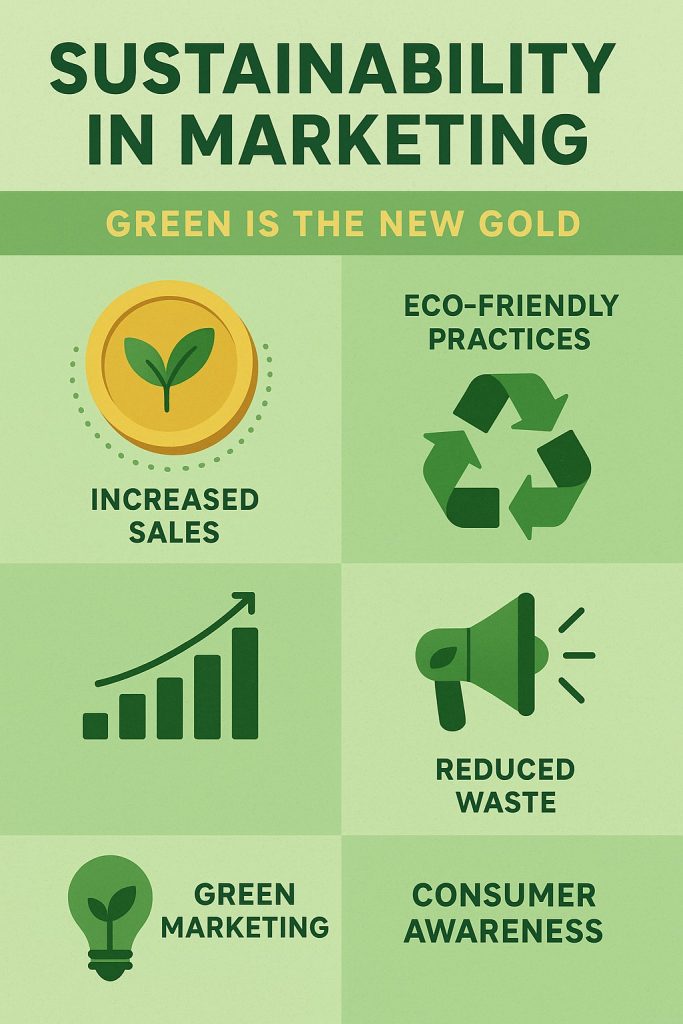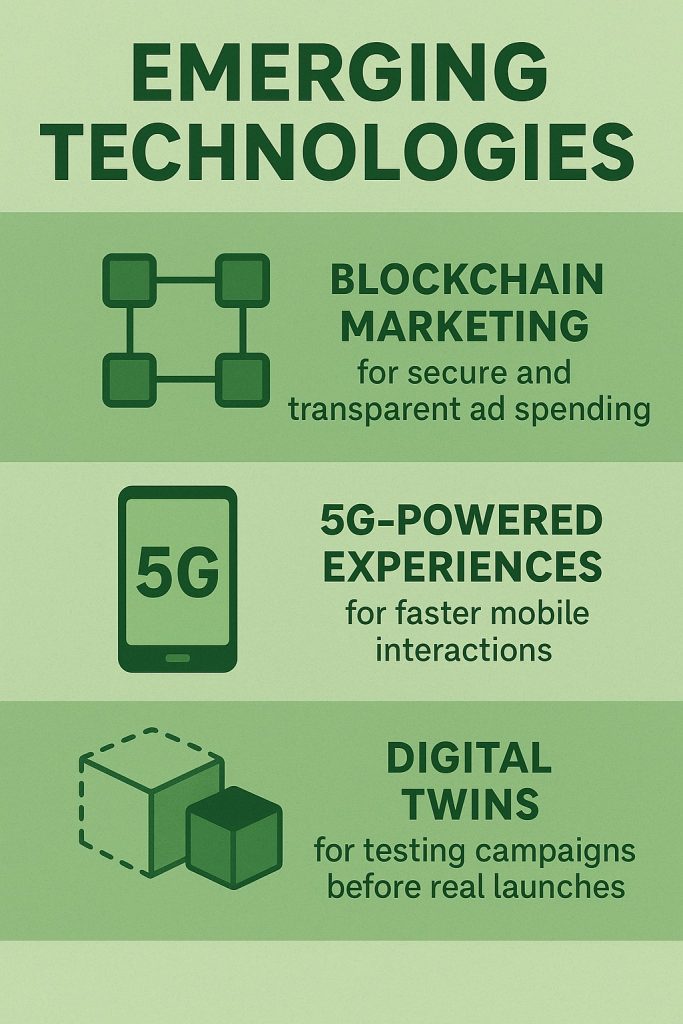As a digital marketing professional, I still remember the very first campaign I managed. Digital Marketing Trends 2025: A Storytelling Guide for New Marketers sheds light on how modern strategies powered by AI, personalization, and influencer marketing are reshaping the way campaigns connect with audiences and drive results. This guide empowers beginners to craft engaging narratives that connect with audiences and build authentic digital brand experiences. It was a simple social media marketing ad for a small bakery, and I spent hours debating which picture of cupcakes would bring more clicks. At that time, the tools were basic, and success was measured by likes and shares. Fast forward to 2025, and the digital marketing world looks nothing like it did back then. Artificial intelligence now predicts customer behavior, influencers drive entire product launches, and consumers expect personalized experiences every step of the way. For businesses aiming to keep up, one of the most effective strategies is to Find Micro Influencers, as they bring authenticity and targeted reach in ways that traditional advertising often can’t.
Do you know digital marketing is a rapidly evolving field where today’s breakthrough can become tomorrow’s old news? For beginners, this can feel overwhelming. But here’s the truth: if you learn to embrace trends and adapt quickly, you’ll always stay ahead of the curve.

Digital Marketing Trends
So, let’s take a storytelling-driven journey through the most important digital marketing trends of 2025 with real-life examples, lessons, and predictions to inspire your career.
10 Digital Marketing Trends 2025
As you know! Digital Marketing Trends are transforming how brands connect with audiences in today’s fast-paced digital world. From AI-powered personalization to community-driven content, marketers must adapt quickly to stay competitive. This guide explores the latest innovations, practical insights, and future predictions every beginner and professional should know to build effective strategies and drive meaningful engagement in the ever-evolving digital marketing landscape.
1. AI in Marketing – The Digital Assistant That Knows You Best
Imagine walking into your favorite clothing store, and before you even say a word, the salesperson already knows your size, color preference, and the last item you bought. That’s exactly what AI marketing tools are doing in 2025, but on a massive scale.
Companies now use AI-driven platforms like ChatGPT-powered assistants and predictive analytics tools to understand customer needs even before customers realize them. For instance, an online skincare brand might recommend a moisturizer just as the weather in your city turns dry, thanks to AI-powered prediction.
Core Lesson for new marketers: Don’t see AI as a replacement for creativity — see it as your smartest teammate. Use AI for repetitive tasks like customer support, content ideas, and targeted ads, but always add your human touch to make campaigns authentic.
Future prediction: By 2030, AI will handle up to 80% of customer interactions, but brands that maintain a balance between automation and human connection will win loyalty.
2. Influencer Marketing 2.0 – From Fame to Authenticity
A few years ago, big celebrities dominated influencer marketing. But in 2025, micro and nano influencers — people with smaller but loyal communities — are driving real results. Why? Because audiences crave authenticity.
Think of it like this: if your neighbor recommends a new coffee shop, you’re more likely to trust them than a Hollywood star who was paid to hold a cup. Brands are now partnering with local creators who genuinely love their products, turning customers into storytellers.
Actionable tips: If you’re starting out, don’t chase the biggest influencers. Focus on building relationships with small but trusted voices in your niche.
Future prediction: By 2027, brands will invest more in community ambassadors than celebrity endorsements, shifting the budget toward long-term partnerships rather than one-off promotions.
3. Short-Form Video – The 30-Second Window
TikTok, Instagram Reels, and YouTube Shorts have reshaped consumer attention spans. Today, a 15–30 second video can generate more sales than a 5-minute ad. Why? Because people scroll fast, and only bite-sized stories survive.
Picture this: A local bakery posts a 20-second video showing a chocolate cake melting as it comes out of the oven. That video goes viral, bringing in hundreds of customers the next day. Short-form videos make people feel something quickly joy, curiosity, or hunger.
Core Lesson: Learn to tell a story in seconds. Hook your audience in the first 3 seconds, keep it visual, and end with a call to action.
Future prediction: By 2026, short-form video will account for 70% of all social media ad spending.
4. Personalization – The Era of “For You” Marketing
Remember when you’d get the same promotional email as everyone else? Those days are gone. In 2025, consumers expect hyper-personalized experiences.
Netflix suggesting the perfect movie, Spotify curating the right playlist, or an online store remembering your shopping cart personalization is everywhere. A beginner-friendly example: An email campaign that greets the customer by name, offers products based on their last purchase, and even adjusts the tone depending on their age group.
Tips for beginners: Start small. Use data from customer behavior (such as purchase history or website visits) to craft personalized recommendations.
Future prediction: By 2028, personalization won’t just be about names in emails — it will evolve into real-time customization where every digital interaction feels unique to each user.
5. Voice Search & Conversational Marketing – Talking is the New Typing
Think about how often you say, “Hey Google, find me the nearest pizza shop”. That’s voice search in action. By 2025, more than half of online searches are voice-based.
Brands are now optimizing their websites for natural speech queries. Instead of targeting “best Italian restaurant Dhaka,” marketers optimize for “Where’s the best Italian restaurant near me?”
On top of that, conversational marketing — chatbots and AI assistants — keeps customers engaged 24/7. Picture a clothing brand chatbot asking, “Do you prefer casual or formal wear?” and then guiding customers through the purchase.
Future prediction: By 2030, voice commerce (shopping through voice commands) will become a trillion-dollar industry.
6. AR/VR Marketing – Shopping Without Stepping Out
Imagine trying on a pair of sunglasses through your phone camera or walking through a virtual furniture showroom without leaving your living room. That’s the magic of AR (Augmented Reality) and VR (Virtual Reality) marketing.
In 2025, brands are using AR filters on social media for product try-ons and VR showrooms to offer immersive experiences. IKEA, for example, allows customers to place 3D furniture in their living room virtually before buying.
Future prediction: By 2032, AR/VR will dominate e-commerce, making physical trial rooms almost unnecessary.
7. Data Privacy – Building Trust Through Transparency
In today’s digital world, customers are smart. They know their data has value, and they won’t share it unless they trust you. With new regulations like GDPR updates and rising privacy concerns, transparency is non-negotiable in 2025.
Brands now highlight their data usage policies upfront. For example, some e-commerce sites say, “We use your data only to improve recommendations — not for resale.” This honesty builds trust.
Future prediction: By 2030, companies that fail to prioritize data privacy will lose half their customer base.
8. Sustainability in Marketing – Green is the New Gold
Consumers in 2025 are conscious. They don’t just care about what they buy — they care about the impact of their purchase. A T-shirt brand that promotes eco-friendly cotton attracts more loyalty than one that only talks about discounts.

Brands are telling sustainability stories: from showing behind-the-scenes of recyclable packaging to highlighting eco-friendly supply chains. For example, a cosmetic company shares a short video of how it reduced plastic waste by 40%.
Future prediction: By 2035, sustainability will be a top deciding factor in most purchase decisions, overtaking price in some industries.
9. Community-Driven Content – From Audience to Family
In 2025, the most powerful marketing doesn’t come from brands — it comes from communities. When customers feel like they belong, they create their own content and spread the word.
Think about LEGO Ideas, where fans submit their own set designs, and the winning ones become real products. Or fitness brands that create online challenges where users share progress videos.
Future prediction: By 2030, community-driven content will outperform paid ads in trust and engagement.
10. Emerging Technologies – What’s Next?
The digital world never stops evolving. In 2025, marketers are experimenting with:
- Blockchain marketing for secure and transparent ad spending.
- 5G-powered experiences for faster mobile interactions.
- Digital twins (virtual replicas of products) for testing campaigns before real launches.

Lesson about emerging technologies: Don’t be afraid to experiment. Even if you can’t adopt new technologies fully, stay curious and informed. Early adopters often gain the biggest advantage.
Future prediction: By 2040, technologies we see as futuristic today — like AI-generated brand avatars or fully immersive metaverse stores — may become everyday marketing tools.
Conclusion – Embrace Change, Tell Stories, Stay Human
Digital marketing in 2025 isn’t about chasing every new tool or trend blindly. It’s about understanding people, telling stories, and building trust. Tools like AI, AR, and influencer marketing are powerful, but they only work when combined with authenticity and creativity.
As a beginner marketer, remember this: the digital world will keep changing, but curiosity and adaptability are your greatest superpowers. Don’t fear the pace of change — embrace it. Each new trend is not a threat but an opportunity to connect with people in new ways.
The marketers who thrive in 2025 and beyond will be those who mix technology with humanity, innovation with empathy, and trends with timeless storytelling.
So, as you step into this fast-moving field, ask yourself: What story will you tell the world, and how will you use these trends to inspire action?
Because the future of digital marketing isn’t just about clicks or conversions — it’s about creating experiences that people remember.

